
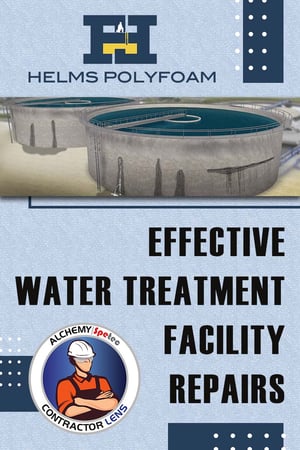 This post is part of the Alchemy-Spetec Contractor Lens series, featuring views, news & case studies written by our customers. This article, written by Morgan Helms of Helms Polyfoam, is an overview of void filling with polyurethane foam. If you're an Alchemy-Spetec customer and you'd like to discuss writing content for our blog, please send an email to marketing@alchemy-spetec.com today!
This post is part of the Alchemy-Spetec Contractor Lens series, featuring views, news & case studies written by our customers. This article, written by Morgan Helms of Helms Polyfoam, is an overview of void filling with polyurethane foam. If you're an Alchemy-Spetec customer and you'd like to discuss writing content for our blog, please send an email to marketing@alchemy-spetec.com today!
Water and wastewater treatment facilities are essential for communities and municipalities. They supply drinking water to communities and treat wastewater before it is discharged into lakes or rivers. Many water and wastewater treatment facilities are aging and badly in need of repairs and maintenance.
Concrete is one of the most common building materials for water treatment facilities. Whether part of new construction or an older structure, concrete can be susceptible to leaks. Leaks through concrete are generally going to be through cracks, joints, and honeycomb (areas in poured concrete of mainly coarse aggregate with voids in between). Depending on water volume and pressure, and the size of the joint or crack, you may encounter weeping leaks, steady leaks, and gushing leaks.
What’s the solution? Helms Polyfoam! With any aging concrete structure in which moisture is present, the need for maintenance is inevitable. When it comes down to dollars spent on water treatment, maintaining water leaks is paramount. Helms Polyfoam can repair and effectively seal leaks in water treatment facilities also while staying within budget.
The Alchemy-Spetec polyurethane leak seal resins we use are pumped into cracks in walls and water holding tanks to fill and seal them, both now and in the future. Anywhere water can go, these polyurethane resins can follow. Polyurethane crack injection repairs and prevents leaks by filling cracks in concrete tanks and pipes. Polyurethane concrete crack injection repair is waterproof and non-toxic. There is no need to worry about dangerous chemicals seeping into the ground or contaminating the water.
Helms is your Mississippi area expert on all structural, polyurethane resin repairs. Our repairs can be completed quickly without shutting down operations or taking anything offline for long periods. Plus, our repairs are much more affordable than other alternatives, such as replacing pipes or tanks altogether.
We implement a repair plan that doesn’t require you to shut down operations or leave you with a big mess. It requires no excavation. This means a smaller footprint on your job site or facility and minimum downtime.
And you know what is even better? ARPA!
The American Rescue Plan Act (ARPA) includes in the Fiscal Recovery Funds (FRF) one of the largest fiscal advances to state and local government budgets in recent history. ARPA federal funding now makes it possible to address infrastructure and structural repairs – just like these water and wastewater treatment facility repairs – that are an ongoing challenge in our state.
Helms Polyfoam has water treatment facility repair experience using polyurethane concrete crack injections to seal off leaks. And now, you can use ARPA funds to help you cover these costs! Call us at 601-966-7821 or click here to fill out our contact form.
Want more info on Alchemy-Spetec leak seal products?


 Episode 14 of The Injection Connection features Charlie "The Grout Geek" Lerman interviewing veteran coatings expert (and punk rock drummer) Murray Heywood. Don't miss this info-packed and entertaining discussion!
Episode 14 of The Injection Connection features Charlie "The Grout Geek" Lerman interviewing veteran coatings expert (and punk rock drummer) Murray Heywood. Don't miss this info-packed and entertaining discussion!



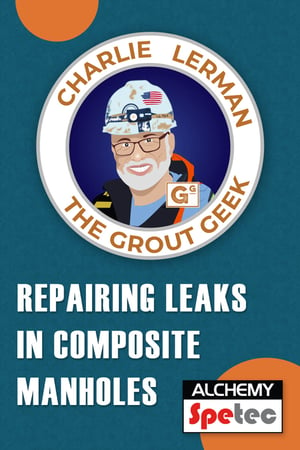 Sewers can be aggressive to downright hostile environments for concrete. Composite and fiberglass manholes are becoming more popular due to their superior resistance to sewer gases. While chemically resistant, composite manholes still have penetrations and joints. And any structure with penetrations and joints is still susceptible to infiltration.
Sewers can be aggressive to downright hostile environments for concrete. Composite and fiberglass manholes are becoming more popular due to their superior resistance to sewer gases. While chemically resistant, composite manholes still have penetrations and joints. And any structure with penetrations and joints is still susceptible to infiltration.
 This post is part of the Alchemy-Spetec Contractor Lens series, featuring views, news & case studies written by our customers. This article, written by Morgan Helms of
This post is part of the Alchemy-Spetec Contractor Lens series, featuring views, news & case studies written by our customers. This article, written by Morgan Helms of 
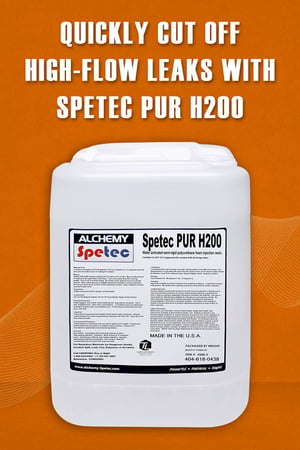


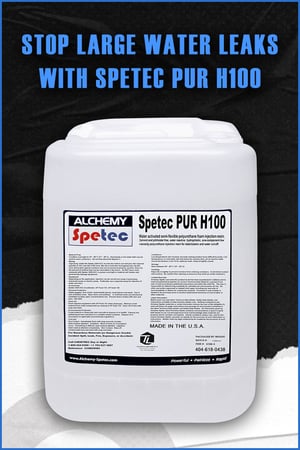 One of the greatest threats to our nation's infrastructure is unseen water eroding away its structural integrity. Water is relentless and all types of structures and sewer collection systems are at risk. If left unchecked, uncontrolled water will end up causing massive rehabilitation and repair bills. The market for repairing and controlling water infiltration is limitless.
One of the greatest threats to our nation's infrastructure is unseen water eroding away its structural integrity. Water is relentless and all types of structures and sewer collection systems are at risk. If left unchecked, uncontrolled water will end up causing massive rehabilitation and repair bills. The market for repairing and controlling water infiltration is limitless.
 Alchemy-Spetec offers a wide variety of online resources for current and aspiring infrastructure repair contractors. Let's take a look at what's available...
Alchemy-Spetec offers a wide variety of online resources for current and aspiring infrastructure repair contractors. Let's take a look at what's available...
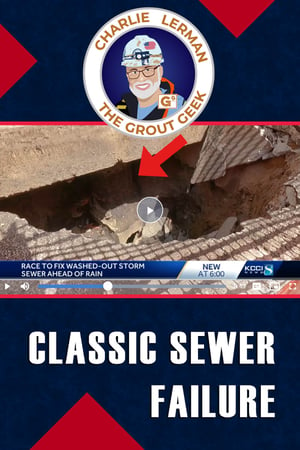 Read through this list:
Read through this list:
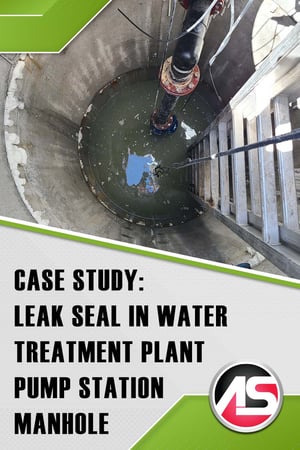 The Central Davis Sewer District (CDSD) is a publicly owned collection system and water treatment plant that serves three local cities in Northern Utah. With a new highway being constructed just outside their facility, a new pump station had to be installed on the premises. After installation of the new pump station, a large leak appeared in the manhole which caused it to fill up with about 10 feet of water. The CDSD contacted
The Central Davis Sewer District (CDSD) is a publicly owned collection system and water treatment plant that serves three local cities in Northern Utah. With a new highway being constructed just outside their facility, a new pump station had to be installed on the premises. After installation of the new pump station, a large leak appeared in the manhole which caused it to fill up with about 10 feet of water. The CDSD contacted 


 The Specialty Waterproofing with Chemical Grouts presentation explains and demonstrates how polyurethane chemical grout can be used to
The Specialty Waterproofing with Chemical Grouts presentation explains and demonstrates how polyurethane chemical grout can be used to 
